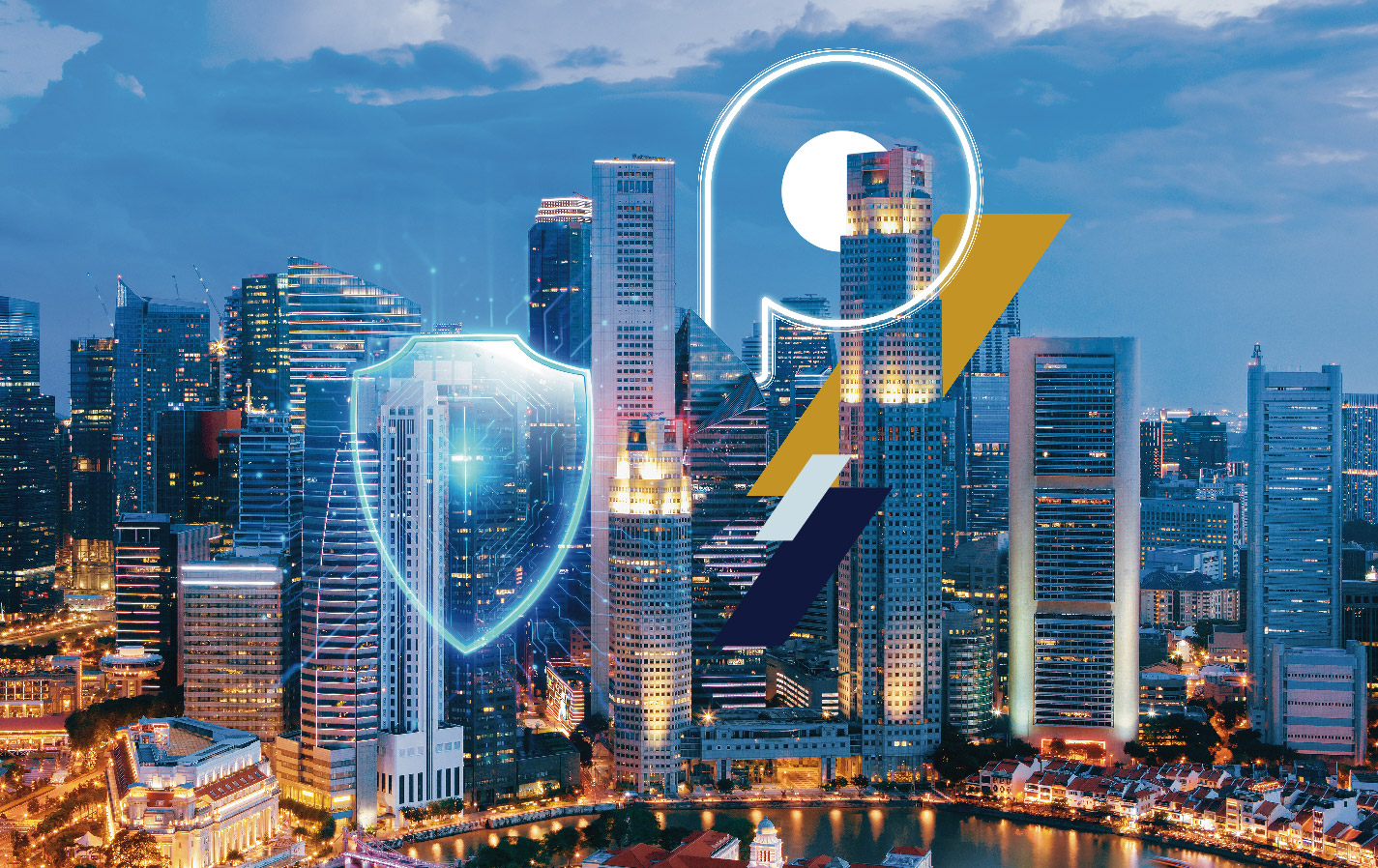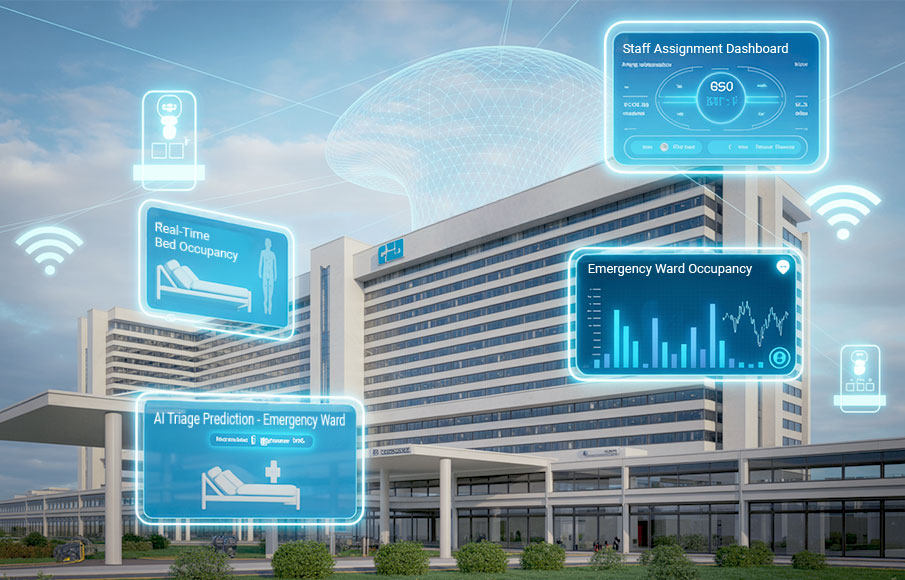Cybersecurity Threats in 2024 & How to Tackle Them
- 08 June 2024

Today, you can’t operate a successful business without some kind of internet presence.
Many companies are taking their services and product offerings online in order to keep up with the market demands. And with the hit from the Covid-19 pandemic, having an Internet presence has become a must if you want to survive.
With increased proliferation of online services, virtual collaboration and even e-transactions, the surface area for cyber-attack has increased dramatically.
Unfortunately, many businesses omit one essential thing when it comes to doing anything online – and that’s security. According to some estimates, the frequency of hacking attacks has grown by more than 400 percent in the past year – costing the global industry more than 15 billion dollars.
In this article, we’ll go over the most pressing cybersecurity threats that will cost your business and how to protect yourself from these threats.
But, before we get into the meat of the matter, let’s go over some common types of cyber-attacks.
What Are Cybersecurity Threats?
Cybersecurity threats are malicious activities or potential events that aim to compromise digital systems, networks, or data. These can include hacking attempts, malware, phishing, and other tactics designed to exploit vulnerabilities, gain unauthorised access, steal information, disrupt operations, or cause damage to individuals, organisations, or infrastructure.
4 Types of Online Attacks

No matter how sophisticated a cyber attack is, they can all be categorized into four district types:
#1 Malware
Malware is one of the broadest terms when it comes to cyber threats. Malware is any type of malicious software that’s designed to harm an IT system. In many cases, malware is used by cyber-criminals to steal sensitive data or to spy on your keystrokes so they can find out your passwords.
#2 Ransomware
Ransomware is slowly becoming one of the most common security threats in the world. As its name suggests, ransomware is a malicious application that locks the victim’s computer system by encrypting the data and holding it for ransom. Many companies and organisations around the world are becoming victims of ransomware attacks, and in many cases, the attackers get their ransom.
#3 Social Engineering
Social engineering can be considered as hacking humans. Social engineering attacks rely on manipulating social interaction such as taking advantage of a person’s emotions in order to gain access to sensitive information. This type of threat is incredibly effective – some reports estimate that a whopping 93% of business data breaches were a result of social engineering.
#4 Phishing
Phishing is one of the simplest and most effective types of hacking attacks. In the most basic form, a phishing attack is conducted by hackers using a false identity to trick an employee into providing them with sensitive information.
6 Top Cybersecurity Threats And How To Protect Your Business From Them
Now that you know more about the 4 different types of cyber attacks, let’s focus on what that means for your business.
As a company owner or an employee, you should know how important your security and data are. Even if you have a dedicated IT service provider, you should still be aware of cybersecurity trends and how they can impact your business.
If you want to find out more about the latest cybersecurity trends, you’re in the right place. Below we’ve listed the top six cybersecurity threats that can happen to both individuals and businesses. What’s more, in each section we included several guidelines you can follow to prevent bad actors from gaining access to your data.
If you want to ensure your organization is risk-free, we recommend you work with a managed IT service company like SPTel.
With that out of the way, let’s get started!
#1 Phishing Attacks

As mentioned above in the article, phishing is one of the most common types of cybersecurity threats in the world. The reason for this is due to the high level of interaction people have via electronic communication.
Phishing scams are becoming even more of a threat as email and instant messaging increase in the business world.
So, why does a rise in online communication increase the risk of phishing? Well, your employees get hundreds of emails and social media messages every day. Unfortunately, towards the end of the workday, as people become tired, they become susceptible to making mistakes.
Cyber-criminals are very well aware of this and choose this period of time to execute the cyber-attack. After all, all it takes to topple the entire system is one employee who is not paying attention.
Are There Different Types Of Phishing Attacks?
There are five different types of phishing attacks and all are aimed at gaining access to your company’s devices by scamming the login info from your employees.
#1 Phishing Emails
The most common type of phishing attack is a malicious email. The cyber-criminal will register a fake domain that mimics a genuine organisation and send hundreds of thousands of generic requests.
The fake domain will often differ from a genuine one in only a couple of letters. In most cases, the attacker will substitute characters with similar ones like using “r” and “n” next to each other to create an ‘rn’ instead of ‘m’.
There are many ways to spot a malicious email, but a general rule is that you should always check the email address if there is a prompt for clicking a link in the body of the email.
#2 Spear phishing
Spear phishing involves sending an email to a specific person in the organisation. Hackers usually employ this attack only if they have specific information about the victim such as their name, place of employment, job title, and specific information about their job role.
#3 Whaling
Whaling is very similar to the previous threat, but this attack involves sending a malicious email to senior executives. Although the goal of this attack is the same as any other – to gain access to critical information about your organisation – it’s far more subtle than other types of these attacks. Whaling attacks typically involve fake tax returns.
#4 Smishing And Fishing
Smishing and fishing are similar to regular phishing attacks, but use SMS messaging and phone calls as a vector of approach. Hackers will ask the victim to provide critical information to “verify” their identity.
#5 Angler Phishing
Angler phishing is an emerging type of cyber-attack that utilises social media. The hackers will use fake URLs, cloned websites, posts, and messages to persuade people to divulge critical information or download malware that can bring down your entire network.
How Businesses And Organizations Can Prevent This
The first thing you can do to protect yourself from this type of attack is to watch for unusual emails and messages. Most of these cyber-attacks will use unusual wording such as “Dear Customer” instead of your name, and will usually have bad grammar or a generic signature.
The second thing you can do is be cautious when clicking on links or giving critical information. Always check the sender’s address or social media profile to check if everything is legitimate before clicking on a link or giving away any information.
The third thing you can do is use different tools that will help you spot phishing emails and messages. There are quite a few security toolbars you can download that will alert you to sites that contain phishing information.
You can also use a business firewall such as the one from SPTel since it can filter suspicious links and warn you or even prevent you from opening the web page.
Lastly, you can enable two-factor authentication, so even if threat actors manage to get your password, they won’t be able to get into your account.
#2 Malware And Ransomware

Malware and ransomware are some of the broadest terms when it comes to cybersecurity. Malware and ransomware are a malicious form of software that’s designed to harm a computer or an entire network.
When malware is downloaded, it performs a malicious function such as stealing, deleting, or encrypting sensitive data. In many cases, attackers also use this technology to spy on your computer activity so they can get more info for a more serious cyberattack.
Although this emerging cybersecurity threat isn’t based on social interaction, it is by far the most common.
Attackers know that every business keeps its data on servers that are connected to the internet. All they have to do is crack your security, and they can do whatever they want with your organisation’s’ network and software, including adding malicious code.
It’s not only small businesses that are the target of ransomware and malware. In 2019 Singapore CSA received over two dozen reports of malware called Troldash that hijacked computers and encrypted the data on the drives. This malware caused millions of dollars in damages and affected multiple industries including gaming, tourism, manufacturing, and logistics.
Don’t let your business become a target for malware and ransomware attacks – follow the latest cybersecurity trends and protect your devices and network from malicious software.
How Businesses And Organizations Can Prevent This
Here are a couple of things you can do to protect your business devices and employees from becoming a target for hackers.
Ensure all your computer software and hardware is up to date. If your company has remote work employees, make sure all their applications are up to date. Outdated software, drivers, and even plugins pose a security threat.
You should also enable click-to-play plugins to prevent Flash and Java from running unless you need them. This greatly reduces the risk of data breaches via Flash or Java.
You should remove any old (legacy) software you might have on your network and computers. For instance, if you have a computer running on Windows 10, but you use applications and services designed for Windows 7 – these are considered security threats and are easy targets for attackers.
There are also quite a few tools that will help you detect malicious apps and services. Windows 10 already comes with some form of virus/ransomware protection, installing a next generation firewall with advanced threat protection features such as one from SPTel is also recommended.
#3 Database Exposure

A database exposure is just what it sounds like – a security breach that exposes database data to hackers.
A database exposure can happen in a myriad of ways. Some hackers use social engineering to trick employees into giving them crucial data, while others use computer viruses to access the information they need.
Since most companies and organisations use server systems to host customer and employee information, database exposure or breach is a very serious emerging cybersecurity threat in 2021.
A database exposure increases the risk for social engineering attacks since most databases contain information like customer names, financial records, payment information, all other types of data you wouldn’t want to get leaked.
In 2024, the Singapore Ministry of Education faced a significant cybersecurity incident when an unauthorised individual breached Mobile Guardian’s management portal, compromising data across 127 schools. This breach affected 67,000 parents and 22,000 school employees, exposing personal information such as names, email addresses, time zones, school affiliations, and user roles (parent or staff).
How Businesses Can Prevent This
When it comes to reducing the risk of database exposure – the key is data protection.
If you have a private server (not cloud), make sure the physical hardware is secured behind a locked door. This prevents the risk of someone breaking into your building and accessing your systems with a portable drive.
Next, make sure your database and web applications have their firewalls turned on. Locked doors keep intruders out, but a firewall is the only technology that will keep cyber intruders from accessing your systems are services.
Keep access to the server extremely limited. Each person with a login to the server poses a potential risk for a leak. The fewer the logins, the better.
Lastly, whether you have an in-house server or a cloud server, keep that encrypted and backed up regularly. This way, even if breaches happen, the data is safe and backed up.
#4 Remote Work Endpoint Security Breach
Ever since the Covid-19 pandemic hit the world, we saw an incredible increase in the number of remote workers for businesses and organizations. In fact, many companies are planning to make remote work permanent even after the pandemic ends. This opens many opportunities for hackers.
Remote workers often work without any network security, which is a critical part of any cybersecurity system. Hackers have quickly adapted to the remote work environment and are exploiting cloud-based services, improperly secured virtual private networks, and out-of-date systems to access secure data.
What’s more, hackers are employing machine learning to refine their attacks, which has cost companies that employ remote work more than a billion dollars globally.
How Businesses And Organizations Can Prevent This
The first thing you should do to cull these types of cybersecurity threats is to educate your employees on the importance of cybersecurity tools. You should also educate them on how to spot malicious emails, web pages, and social engineering.
It is also crucial you use remote monitoring and endpoint management tools that can automatically patch remote computers and keep them secure. If your IT service provider doesn’t use this technology, you should see they implement it.
#5 Insider Threats

Hackers don’t have to employ machine learning viruses or elaborate social engineering attacks if they have help from the inside. According to the 2020 Verizon data breach investigation report, almost 30 percent of security breaches involved an inside actor. Insider threats are only going to increase in 2021.
You can have the best networks and tools in the industry, everything it takes to topple your cybersecurity system is one disgruntled employee.
It doesn’t even have to be a dissatisfied employee. Most companies have their systems insecure because of negligence. In 2019, a security researcher discovered a public Microsoft database with more than 250 million entries containing private customer data.
How Businesses And Organizations Can Prevent This
To stay secured against insider threats, companies must accurately detect, investigate and respond to issues that could indicate a potential insider threat. And since it’s impossible for companies to use antivirus apps for these types of threats, specialised tools are the key.
There are quite a few tools that can detect insider threats by monitoring unauthorised logins, apps installed on locked-down computers, users that were recently granted admin access to a device, new devices on restricted networks, and more.
#6 DDoS Attacks
Although they’re not aimed to steal your data or extort money, DDoS (dedicated denial of service) attacks can disrupt your business for days.
DDoS attacks are almost as old as the internet itself. The aim of these cyberattacks is to overload your company’s servers with requests, ultimately causing the whole system to crash – at least temporarily.
No one is safe from this type of cyberattack, not even internet giants such as Github. In 2018, this coding website got hit by the biggest DDoS attack in history. The attackers were bombarding Github’s servers with whopping 1.35 terabytes of requests every second.
How Businesses And Organizations Can Prevent This
The best prevention against DDoS attacks is an early alert and a way to mitigate the cyber threat quickly to restore operations as soon as possible.
SPTel offers proactive DDoS protection for your business. With SPTel’s Clean Pipe network, your business will receive free DDoS attack detection that will pro-actively warn you of any DDoS attacks on your network, giving you precious time to mitigate the problem. What’s more, the Clean Pipe network also provides you with the option of mitigating the DDoS attack on demand.
Complementing SPTel’s DDoS protection is their Next-Generation Firewall service that utilises best-of-breed perimeter protection & virtualization platform hosted within SPTel’s Software Defined Network. SPTel’s solutions leverage an Integrated Operations Centre (IOC) supported by ST Engineering’s world class Security Operations Centre to provide you with on-time incident detection, notifications, and recommendations on how you can improve your cybersecurity.
SPTel’s Business-Grade Solutions to Cybersecurity Threats
With the surge in digitalised services and advanced persistent threats, cybersecurity is becoming a crucial component of any business.
Don’t let your networks and business go undefended. Educate your employees on the importance of cyber resilience and work with reputable digital service providers such as SPTel to protect your business from revenue and reputational loss.
To find out more about how SPTel’s Managed Perimeter Protection can provide your business with twofold security protection today.












